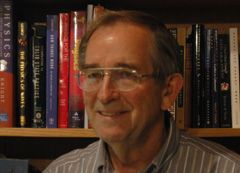Assessing the RATE Project
Randy Isaac, Executive Director of the American Scientific Affiliation
Perspectives on Science and Christian Faith
Key points of the RATE book
- There is overwhelming evidence of more than 500 million years worth of radioactive decay.
- Biblical interpretation and some scientific studies indicate a young earth.
- Therefore, radioactive decay must have been accelerated by approximately a factor of one billion during the first three days of creation and during the flood.
- The concept of accelerated decay leads to two unresolved scientific problems, the heat problem and the radiation problem, though there is confidence that these will be solved in the future.
- Therefore, the RATE project provides encouragement regarding the reliability of the Bible.
The scientific research involved in the project in defense of the claim that the earth is approximately 6000 years old explored four areas:
- Helium diffusion in zircons
- Radiohalos in granites
- Isochron discordances
- Trace amounts of carbon-14 in pre-Cambrian material
Isaac's analysis is low-key and carefully understated, but after commenting on the problems which lead to lack of credibility of any of these four approaches, his conclusion is strongly negative. "All of the four radioisotopic areas discussed involve aspects which the scientific community feels are not reliable for dating."
His strongest comments are reserved for the fact that having admitted that the heat problem and radiation problem were left totally unresolved, the authors yet confidently claimed that their results had encouraged a message that the reliability of the Bible (i.e., literal days, 6000 years) had been confirmed. Isaac's response was "Any portrayal of the RATE project as confirming scientific support for a young earth, contradicts the RATE project's own admission of unresolved problems. The ASA can and does oppose such deception."
- Larry Vardiman, et al, eds, Radioisotopes and the Age of the Earth (The RATE project)
- Donald DeYoung, Thousands not Billions: Challenging the Icon of Evolution
|
Index
References |
